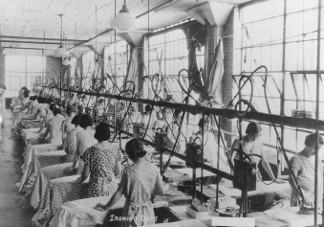BALDWlN, JOHN (ca. 13 Oct.1799-ca 28 Dec.1884) was a successful businessman and educator who used his wealth to promote righteous and intellectual 1iving. Baldwin was born in North Branford, Connecticut, the son of Joseph and Rosanna (Meloy) Baldwin. Although largely self-taught, he acquired enough academic training to hold several teaching positions. He and his bride came to the Berea area in 1828 to farm 200 acres of land he had purchased. About 1833, Baldwin discovered high-quality sandstone on his property which he fashioned into a crude grindstone to sharpen tools and utensils. Baldwin leased his lands to others for the quarrying operations, and the income from the sandstone leases and the manufacture and sale of grindstones provided him with enough money to pay off his debts and to pursue his benevolent interests.
A believer in moral living, Baldwin donated land in June 1836 to establish the Lyceum Village--a utopian community and schools where a lifestyle of simplicity and self-denial was practiced. By 1839 the community had dwindled, and Baldwin assumed its debts and remaining assets. Still anxious to organize a school, he gave land to the North Ohio Conference of the Methodist Episcopal Church in 1845 to establish the Baldwin Institute as a co-educational preparatory school combining education and work experience for its students. Ten years later he underwrote the Institute's rechartering as Baldwin University, the predecessor of Baldwin-Wallace College. He also established schools in Baldwin, Kansas, Baldwin, Louisiana, and Bengalore, India.
Baldwin married Mary Chapel in January, 1828, and they had seven children: Milton, Rosanna, Hulda, Newton, John, Mary, and Martha. He died in Baldwin, Louisiana.
Last Modified: 11 Jul 1997 03:13:27 PMJohn Baldwin Papers, 1827-1902 , WRHS.
- Related Article(s)









